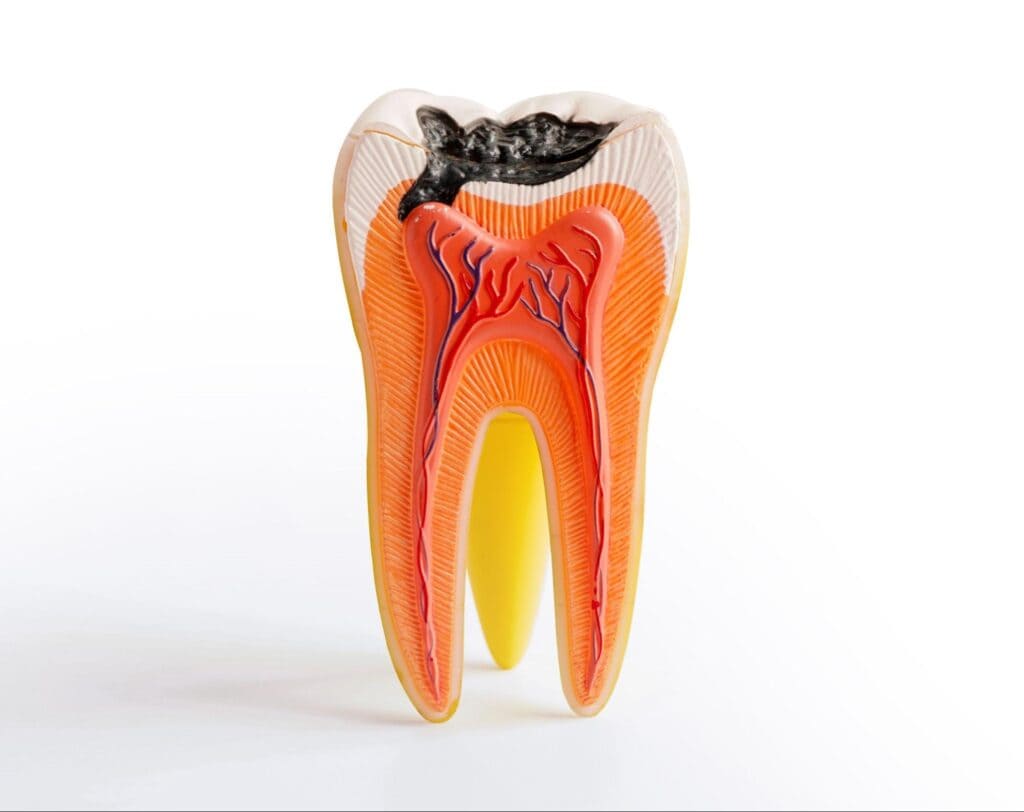How Can You Tell If You Need a Root Canal?
Oral health is an integral part of our overall well-being. Yet, many of us tend to overlook it until we experience pain or discomfort. One common dental procedure that often evokes anxiety is the root canal. However, advances in dental technology have made root canals much simpler and more comfortable than ever before.
You might need a root canal if you’re experiencing ongoing tooth pain, which could indicate the tooth’s pulp is damaged. By acting quickly, a root canal can help you avoid a costly tooth extraction. Keep an eye out for the signs and be proactive.
What Is a Root Canal?
A root canal is a dental procedure designed to remove infected or damaged tissue from inside a tooth. The term “root canal” refers to the natural cavity within the tooth that houses the tooth’s pulp chamber and nerves. During the procedure, a dentist removes the infected tissue, cleans and shapes the canal itself, and then fills and seals it to prevent further infection.
The outer layers of a tooth, called the enamel, protect the sensitive pulp within. If the enamel is damaged, the pulp can be at risk for bacterial infection. Various factors can lead to this increased vulnerability, including:
- Extensive cavities that penetrate the pulp
- Fractured or damaged teeth
- Impact to the tooth, even if it does not result in a visible crack
- Repeated dental procedures performed on the same tooth
Are Root Canals Painful?
Several myths about root canals can deter people from seeking timely treatment. One prevalent myth is that root canals are extremely painful. In reality, modern dental techniques and anesthesia mean the procedure is typically no more uncomfortable than getting a regular filling.
Another myth is that it is better to extract the tooth than save it with a root canal. However, preserving your natural teeth is always preferable and reduces the risk of complications from having a missing tooth.
Signs You Might Need a Root Canal
Your dentist can let you know if you need a root canal during a routine check-up. However, just because you notice a problem between exams does not mean that you should wait. Recognizing the symptoms that indicate the need for a root canal is crucial for early detection and treatment. Here are some common signs to look out for:
- Visible tooth chipping or breakage
- Pain when chewing or biting
- Lingering sensitivity to hot or cold foods
- Swollen gums
- Discoloured gums or teeth
- Persistent bad breath
- A pimple on the gums, which could be an abscess

The Root Canal Process
A root canal can take anywhere from 1–2 appointments depending on the severity. The first step involves a thorough examination and X-rays to determine the extent of the infection or damage. Your dentist will explain the procedure and answer any questions you may have.
Here is what you can expect during a root canal:
- Your dentist numbs your tooth and gums with local anesthetic
- A rubber dam is placed around the tooth to keep out bacteria from your saliva
- Your dentist carefully opens the tooth to reach the damaged pulp
- Using fine dental tools, your dentist removes the damaged pulp
- Once the canal is cleaned, your dentist fills it with a rubber-like material
- Finally, your dentist seals the tooth with either a temporary or permanent filling
Your gums may be tender as you recover, but the benefits of a root canal are worth it. Firstly, a root canal can provide significant pain relief by addressing the discomfort caused by damaged pulp. Root canals can also help preserve a tooth that might otherwise need to be extracted, allowing you to keep your natural smile intact.
Furthermore, by removing the infected pulp, a root canal can prevent the spread of infection to nearby teeth and gums, thereby preserving your overall oral health.
How to Avoid Needing a Root Canal
Preventing the need for a root canal starts with maintaining good oral hygiene and regular dental check-ups. The most significant step you can take is one you should already be doing—brushing and flossing. Root canals are often the result of cavities, which develop when the food we consume combines with the bacteria in our mouths to create a mild acid. This acid can gradually erode our teeth, creating tiny holes in the enamel.
To keep cavities, gum disease, and gingivitis at bay, it is important to floss daily and brush your teeth twice a day with fluoride toothpaste. This natural mineral helps strengthen tooth enamel, allowing it to better protect the soft pulp within. Fluoride is often added to tap water to encourage healthy smiles, but you also find it in some toothpaste and mouthwash.
You should also limit the amount of sugary or acidic foods that you consume, as these contribute to enamel erosion. If you do have a cavity, do not leave it untreated. Your dentist can repair it with a filling and reduce the risk of it spreading deeper.
Finally, wear a mouthguard if you play sports or grind your teeth at night. Doing so prevents damage that could lead to a root canal.
Following these simple steps can help maintain your oral health and prevent more serious dental issues down the line.
You Can Enjoy a Pain-Free Smile Again
Root canals may have a daunting reputation, but understanding the procedure and recognizing the symptoms early can make the experience much more manageable.
If you think you may need a root canal or have other concerns about your family’s oral health, do not hesitate to reach out to our knowledgeable team at South Ancaster Family Dental. We are here to provide you with the quality care you deserve.
Book an appointment today and take the first step towards a healthier smile.

